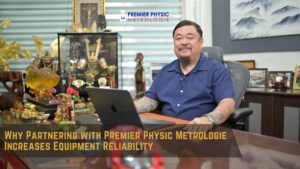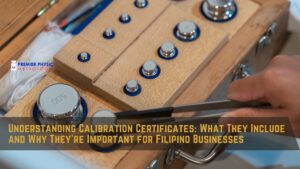In the realm of measurement and instrumentation, accuracy and reliability are paramount. Whether in manufacturing, healthcare, aerospace, or any other industry reliant on precise data, consistent performance is crucial. At the heart of this consistency lies calibration, the process of comparing a measurement device to a known standard to ensure its readings are accurate. However, the effectiveness of calibration hinges on establishing appropriate calibration intervals – the frequency at which instruments should be recalibrated. This article delves into the intricacies of calibration intervals, exploring the factors that influence them and providing guidance on how to determine the optimal frequency for your specific needs.
The Importance of Calibration and its Relationship to Intervals:
Calibration ensures that measurement instruments provide accurate and reliable data, contributing to product quality, safety, and operational efficiency. Without calibration, instruments can drift from their original specifications, leading to inaccurate readings and potentially costly errors. Calibration intervals dictate how often this accuracy check is performed. Too frequent calibrations can be wasteful, while too infrequent calibrations can compromise data integrity and safety.
Factors Influencing Calibration Intervals:
Several factors influence the determination of appropriate calibration intervals:
- Instrument Stability and Drift:
- Explanation: Instruments naturally drift over time due to wear and tear, environmental conditions, and component aging.
- Impact: Instruments with high drift rates require more frequent calibration.
- Considerations: Analyze historical calibration data to assess instrument stability and drift patterns.
- Instrument Usage and Environment:
- Explanation: Instruments used in harsh environments or subjected to heavy usage may experience accelerated drift.
- Impact: High-usage or harsh-environment instruments require shorter calibration intervals.
- Considerations: Consider temperature fluctuations, humidity, vibration, and exposure to corrosive substances.
- Required Measurement Accuracy:
- Explanation: Instruments used in critical applications with stringent accuracy requirements demand more frequent calibration.
- Impact: High-accuracy applications require shorter calibration intervals.
- Considerations: Determine the acceptable tolerance levels for measurements and the potential consequences of inaccurate readings.
- Manufacturer Recommendations:
- Explanation: Instrument manufacturers often provide recommended calibration intervals based on their testing and experience.
- Impact: Manufacturer recommendations serve as a starting point for determining calibration intervals.
- Considerations: Consider manufacturer recommendations in conjunction with other factors.
- Industry Standards and Regulations:
- Explanation: Certain industries have specific standards and regulations regarding calibration intervals.
- Impact: Compliance with industry standards and regulations is mandatory.
- Considerations: Research and adhere to relevant industry standards and regulations.
- Historical Calibration Data:
- Explanation: Analyzing historical calibration data provides insights into instrument stability and drift patterns.
- Impact: Historical data helps refine calibration intervals and optimize calibration schedules.
- Considerations: Maintain accurate records of calibration results and analyze trends over time.
- Risk Assessment:
- Explanation: Evaluate the potential consequences of inaccurate measurements.
- Impact: High-risk applications require shorter calibration intervals.
- Considerations: Conduct a risk assessment to determine the potential impact of measurement errors on product quality, safety, and operations.
- Cost of Calibration:
- Explanation: Balancing the cost of calibration with the benefits of accurate measurements.
- Impact: Optimizing calibration intervals to minimize costs without compromising accuracy.
- Considerations: Consider the cost of calibration services, downtime, and potential product recalls.
Methods for Determining Calibration Intervals:
- Manufacturer Recommendations:
- Description: Adhere to the manufacturer’s recommended calibration intervals.
- Advantages: Simple and straightforward.
- Disadvantages: May not account for specific usage or environmental conditions.
- Historical Data Analysis:
- Description: Analyze historical calibration data to identify trends and patterns.
- Advantages: Provides insights into instrument stability and drift.
- Disadvantages: Requires extensive data collection and analysis.
- Statistical Methods:
- Description: Utilize statistical methods, such as analysis of variance (ANOVA) and control charts, to determine calibration intervals.
- Advantages: Provides objective and data-driven results.
- Disadvantages: Requires expertise in statistical analysis.
- Risk-Based Calibration:
- Description: Determine calibration intervals based on the potential consequences of inaccurate measurements.
- Advantages: Focuses on critical applications and minimizes risks.
- Disadvantages: Requires a thorough risk assessment.
- Calibration Interval Adjustment Programs:
- Description: Implement programs that adjust calibration intervals based on instrument performance and usage.
- Advantages: Optimizes calibration schedules and minimizes costs.
- Disadvantages: Requires ongoing monitoring and evaluation.
Best Practices for Calibration Interval Management:
- Establish a Calibration Program: Implement a comprehensive calibration program that outlines calibration procedures, intervals, and responsibilities.
- Maintain Accurate Records: Keep detailed records of calibration results, including dates, methods, and personnel involved.
- Analyze Calibration Data: Regularly analyze calibration data to identify trends and patterns.
- Adjust Calibration Intervals: Adjust calibration intervals based on instrument performance, usage, and risk assessment.
- Utilize Calibration Management Software: Implement calibration management software to automate calibration scheduling and record keeping.
- Train Personnel: Ensure that personnel involved in calibration are properly trained and qualified.
- Regularly Review and Update: Regularly review and update the calibration program to ensure its effectiveness and compliance.
- Use Traceable Standards: Utilize calibration standards that are traceable to national or international standards.
- Accredited Laboratories: Utilize accredited calibration laboratories that adhere to ISO/IEC 17025 standards.
The Future of Calibration Intervals:
Advancements in sensor technology, data analysis, and artificial intelligence are transforming calibration interval management. Future developments will likely include:
- Predictive Maintenance: Utilizing sensor data and AI to predict instrument drift and schedule calibrations proactively.
- Automated Calibration: Implementing automated calibration systems to reduce human error and improve efficiency.
- Remote Calibration: Enabling remote calibration of instruments over the internet.
- Self-Calibration: Developing instruments with self-calibration capabilities.
- Dynamic Calibration Intervals: Implementing systems that dynamically adjust calibration intervals based on real-time instrument performance.
Key Takeaways:
- Calibration intervals are crucial for ensuring accurate and reliable measurements.
- Several factors influence calibration intervals, including instrument stability, usage, accuracy requirements, and regulatory compliance.
- Various methods exist for determining calibration intervals, including manufacturer recommendations, historical data analysis, and risk-based calibration.
- Implementing best practices for calibration interval management is essential for optimizing calibration schedules and minimizing costs.
- Advancements in technology are transforming calibration interval management.
By understanding the factors that influence calibration intervals and implementing effective calibration programs, organizations can ensure the accuracy and reliability of their measurements, leading to improved product quality, safety, and operational efficiency.




